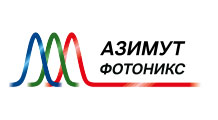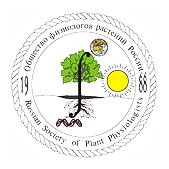Название Новости науки и практики // Май 2020

Mutation reduces energy waste in plants
Studies of wild-type Arabidopsis plants showed that the improvement in photosynthetic performance due to the proteasome mutation also occurs independently of the import mutation. Scientists assume that the proteasome is constantly degrading chloroplast proteins in the cytoplasm, which in turn protects the plant from potential damage caused by too much photosynthesis. This means the plant wastes energy that could be used to build up biomass in order to protect itself. Due to the proteasome mutation, which interferes with the degradation of proteins in the cytoplasm, this limiting factor is reduced and photosynthesis is rendered more efficient.
https://www.eurekalert.org/
Transcriptome profile analysis of two Vicia faba cultivars with contrasting salinity tolerance during seed germination
These findings are helpful to increase the understanding of the salt tolerance mechanism of crops during seed germination, and provide valuable genetic resource for the breeding of salt-tolerant faba bean varieties in future.
https://www.nature.com/
Dynamics of Global Gene Expression and Regulatory Elements in Growing Brachypodium Root System
Scientists identified several Brachypodium candidate root biomass-promoting genes and cis-regulatory elements for further functional validations and root growth improvements in grasses.
https://www.nature.com/
Genome-wide identification of Arabidopsis long noncoding RNAs in response to the blue light
Scientists identified a blue light-induced lncRNA (Long non-coding RNAs) which plays roles in blue light-directed plant photomorphogenesis and response to mannitol stress by serving as a ceRNA (competing endogenous RNA) to sequester miR167 in a type of target mimicry. These results revealed previously unknown roles of the lncRNA in blue light signaling and mannitol stress, and provided useful resources of lncRNAs associated with miRNAs in response to blue light.
https://www.nature.com/
Salt Tolerance Mechanisms of Plants
This review provides an overview of cellular and physiological mechanisms in plant responses to salt. We place cellular responses in a time- and tissue-dependent context in order to link them to observed phases in growth rate that occur in response to stress. Recent advances in phenotyping can now functionally or genetically link cellular signaling responses, ion transport, water management, and gene expression to growth, development, and survival.
https://www.annualreviews.org/
Opposing influences of TAC1 and LAZY1 on Lateral Shoot Orientation in Arabidopsis
TAC1 and LAZY1 are members of a gene family that regulates lateral shoot orientation in plants. Scientists performed genetic, molecular, and biochemical assays to investigate possible interactions between these genes. Surprisingly, the lack of TAC1 did not influence gravitropic shoot curvature responses. Combined, these results suggest TAC1 might negatively regulate LAZY1 to promote outward shoot orientations. However, additional results revealed that TAC1- and LAZY1 influence on shoot orientation is more complex than a simple direct negative regulatory pathway.
https://www.nature.com/
Self-isolation or keep calm and carry on -- the plant cell's dilemma
In this study researchers at the John Innes Centre used bioimaging approaches to investigate what proteins are involved in this process of cellular self-isolation. They show that the cell wall material of fungus - called chitin - triggers different responses in the membrane that lines the plasmodesmal tunnels when compared to the responses it triggers in the membrane that surrounds the cell body. The signaling cascade in plasmodesmata triggers the production of a polysaccharide called callose that forces the plasmodesmal tunnel to close over and for the cells to isolate themselves.
https://www.eurekalert.org/
Hormone produced in starved leaves stimulates roots to take up nitrogen
Scientists identify a hormone produced in nitrogen-starved leaves that stimulates roots to take up nitrogen from soil.
https://www.eurekalert.org/
Study identifies new temperature sensing mechanism in plants
Phytochrome foci have different behaviors at different temperatures and types of light.
https://www.eurekalert.org/
Heat stress-induced transposon activation correlates with 3D chromatin organization rearrangement in Arabidopsis
Here show that heat stress causes global rearrangement of the 3D genome in Arabidopsis thaliana. Contacts between pericentromeric regions and distal chromosome arms, as well as proximal intra-chromosomal interactions along the chromosomes, are enhanced. However, interactions within pericentromeres and those between distal intra-chromosomal regions are decreased. Many inter-chromosomal interactions, including those within the KNOT, are also reduced. Furthermore, heat activation of TEs exhibits a high correlation with the reduction of chromosomal interactions involving pericentromeres, the KNOT, the knob, and the upstream and downstream flanking regions of the activated TEs.
https://www.nature.com/
Regulation of reactive oxygen species during plant immunity through phosphorylation and ubiquitination of RBOHD
Lee et al. show that RBOHD is regulated by C-terminal phosphorylation and ubiquitination. Genetic and biochemical analyses reveal that the PBL13 receptor-like cytoplasmic kinase phosphorylates RBOHD’s C-terminus and two phosphorylated residues (S862 and T912) affect RBOHD activity and stability, respectively. Using protein array technology, They identified an E3 ubiquitin ligase PIRE (PBL13 interacting RING domain E3 ligase) that interacts with both PBL13 and RBOHD. Mimicking phosphorylation of RBOHD (T912D) results in enhanced ubiquitination and decreased protein abundance.
https://www.nature.com/
Modelling Three-Dimensional Leaf Shape Variation
L-Cucumber’s leaf prototype mimics leaf shape of stressed plants.
https://www.botany.one/2020/
The Mechanosensitive Ion Channel MSL10 Potentiates Responses to Cell Swelling in Arabidopsis Seedlings
Basu and Haswell develop and characterize a new assay to study the effects of cell swelling on Arabidopsis thaliana seedlings and to test the contributions of the mechanosensitive ion channel MscS-Like10 (MSL10). The assay incorporates both cell wall softening and hypo-osmotic treatment to induce cell swelling. They show that MSL10 is required for previously demonstrated responses to hypo-osmotic shock, including a cytoplasmic calcium transient within the first few seconds, accumulation of ROS within the first 30 minutes, and increased transcript levels of mechano-inducible genes within 60 minutes.
https://www.biorxiv.org/
Plants have two ways of giving directions to cell wall builders
Plant cells have long been thought to arrange cellulose microfibrils in their cell walls through directional guidance of cellulose synthase complexes (protein complexes that make cellulose microfibrils) along microtubules close to the cell surface. It turns out however that this is not the whole story. A substantial proportion of cellulose synthase complexes move across the cell surface well away from any nearby microtubules.
https://www.botany.one/2020/
Molecular networks regulating cell division during Arabidopsis leaf growth
Numerous genes have been identified that regulate leaf growth, which can be grouped into regulatory modules. Here, we review six important gene modules that affect cell proliferation during leaf development.
https://academic.oup.com/jxb/
Same same, but different: growth responses of primary and lateral roots
Here highlight the similarities and differences in primary and lateral root growth, focusing on the differential impact that phytohormones and environmental cues have on these.
https://academic.oup.com/jxb/
Hormonal regulation of root hair growth and responses to the environment in Arabidopsis
This review presents a molecular framework for how phytohormones regulate normal root hair development and how this is affected by changes in the rhizosphere, to enable greater understanding of the specialized functions of root hairs and their developmental and environmental plasticity.
https://academic.oup.com/jxb/
Chloroplast Transition Metal Regulation for Efficient Photosynthesis
This review provides an updated overview of the chloroplast transition metal requirements and the transporters involved for efficient photosynthesis in higher plants.
https://www.sciencedirect.com/
Discovered a small protein that synchronizes the circadian clocks in shoots and roots
The clock protein ELF4 moves in sync with temperature to coordinate rhythms in shoots and roots.
https://www.eurekalert.org/
Discovery of a mechanism plants use to toggle on photosynthesis
A research team has developed a new tool to study how lipids interact with proteins in plants to help understand how photosynthesis happens.
https://www.sciencedaily.com/
Новости
Новости науки и практики // Апрель 2024
Обзор научных новостей, опубликованных во всемирной паутине за последний месяцФосфорилирование плазматической мембраны H+-АТФазы Thr881 (треонин) участвует в светоиндуцированном открывании устьиц
Ученые из Университета Нагои (Nagoya University) и Института трансформирующих биомолекул (WPI-ITbM) обнаружили новый ...Научная конференция «Photosynthesis and Hydrogen Energy Research for Sustainability – 2024»
Приглашаем Вас принять участие в XII международной научной конференции


Объявления
Записей не найдено.



